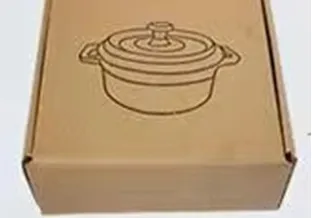
cast iron grill pan cooking
Cooking with a Cast Iron Grill Pan A Guide to Perfect Grilling
When it comes to versatile cooking tools, a cast iron grill pan stands out for its ability to produce delicious grilled meals right in your kitchen. With its high heat retention and even cooking properties, a cast iron grill pan is an essential item for anyone who loves to grill. Whether you're a novice cook or a seasoned chef, understanding how to effectively use this timeless kitchen tool can elevate your culinary creations.
Benefits of Using a Cast Iron Grill Pan
One of the primary advantages of a cast iron grill pan is its excellent heat retention. Unlike other materials, cast iron distributes heat evenly across the cooking surface, which helps to achieve those coveted grill marks on your food. This even heating is essential for properly searing meats, which locks in juices and enhances flavor. Additionally, the ability to withstand high temperatures means you can successfully achieve a perfect sear, creating that mouthwatering crust on your favorite proteins.
Another benefit is the non-stick nature that develops with proper seasoning. Unlike traditional non-stick pans, cast iron grill pans become more non-stick with each use, provided they are maintained well. This is achieved by seasoning the pan with oil, allowing it to create a natural non-stick surface that enhances flavor while preventing food from sticking.
Preparing Your Cast Iron Grill Pan
Before you start cooking, it’s essential to prepare your cast iron grill pan. Seasoning is a critical step that involves coating the pan with a thin layer of vegetable oil or melted shortening and then baking it at a high temperature. This process builds a layer of polymerized fat that protects the pan from rust and provides a non-stick surface. Properly seasoned, your grill pan can last a lifetime.
Once seasoned, preheat the grill pan on medium-high heat for a few minutes to ensure it reaches an optimal cooking temperature. It’s a critical step—adding food to a cold pan can result in sticking and uneven cooking. To test if the pan is ready, sprinkle a few drops of water on the surface; if they sizzle and evaporate immediately, it’s time to start cooking.
cast iron grill pan cooking

Cooking Techniques
When grilling with a cast iron grill pan, there are numerous techniques to achieve great results. For optimal performance, use minimal oil to prevent splatter and promote that desirable char. Whether you’re grilling vegetables, steak, chicken, or seafood, make sure to maintain consistent pressure on the food to achieve grill marks, turning it only once to allow the natural sugars to caramelize properly.
Cooking times will vary based on the thickness and type of food. For instance, a thick steak may require about 4-5 minutes per side for medium-rare, while vegetables like zucchini or bell peppers may only need 2-3 minutes. Keeping your food at room temperature before grilling helps it cook more evenly.
Cleaning and Maintaining Your Grill Pan
To ensure the longevity of your cast iron grill pan, clean it properly after each use. Avoid using soap, as it can break down the seasoning. Instead, scrub with hot water and a stiff brush, and dry it thoroughly to prevent rust. A light coating of oil after cleaning will keep the pan seasoned and ready for your next cooking adventure.
Conclusion
In conclusion, a cast iron grill pan is not just a cooking tool; it's an investment in flavor and versatility. By understanding how to properly care for and utilize this fantastic kitchen accessory, you can impress family and friends with perfectly grilled dishes all year round. Embrace the art of grilling indoors, and enjoy the delicious results!
-
Season Cast Iron Perfectly with GPT-4 Turbo TipsNewsAug.01,2025
-
High Quality Cast Iron Cookware - Baixiang County Zhongda MachineryNewsAug.01,2025
-
Premium Cast Iron Pan: Durable & Perfect HeatNewsAug.01,2025
-
High Quality Kitchen Durable Black Round Cast Iron Cookware Pancake Crepe Pan-Baixiang County Zhongda Machinery Manufacturing Co., Ltd.NewsAug.01,2025
-
Cast Iron Cookware - Baixiang County Zhongda Machinery | Nonstick, Heat ResistanceNewsAug.01,2025
-
High Quality Kitchen Durable Black Round Cast Iron Cookware - Baixiang County Zhongda Machinery | Non-Stick, Heat Retention, DurableNewsJul.31,2025


